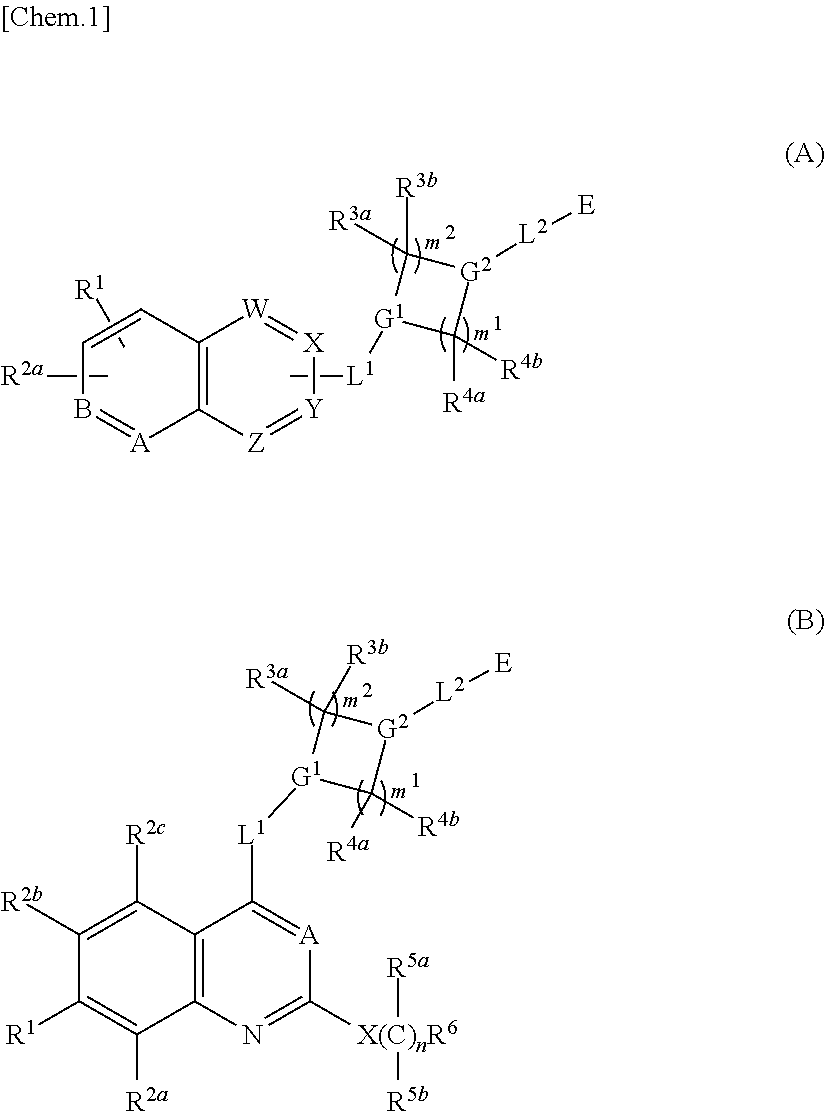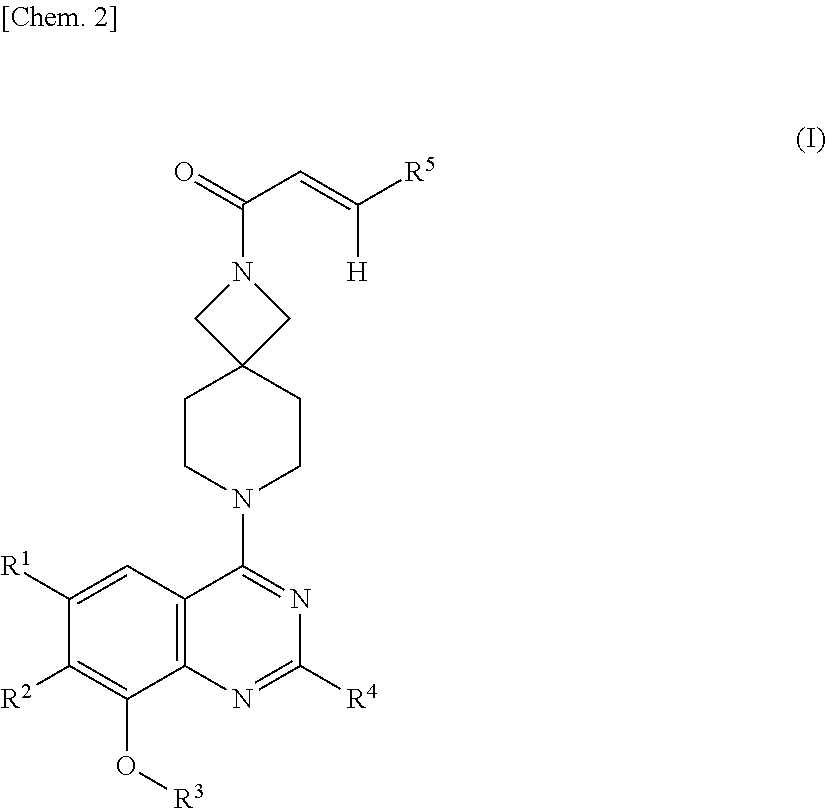Quinazoline compound
a compound and a technology of a compound, applied in the field of quinazoline compound, can solve the problems of carcinogenesis and cancer growth proliferation, and the general difficulty of obtaining a compound having selectivity in the inhibitory activity of a mutant type and a wild typ
- Summary
- Abstract
- Description
- Claims
- Application Information
AI Technical Summary
Benefits of technology
Problems solved by technology
Method used
Image
Examples
preparation example 1
[0174]A mixture of 2-amino-4-bromo-3-fluorobenzoic acid (4.0 g), N-iodosuccinimide (4.0 g), and N,N-dimethylformamide (hereinafter, abbreviated as DMF) (40 mL) was stirred at 50° C. for 2 hours under an argon flow. N-iodosuccinimide (1.5 g) was added to the reaction mixture at 50° C., and the mixture was stirred at the same temperature for 1.5 hours. N-iodosuccinimide (1.5 g) was added to the reaction mixture at 50° C., and the mixture was stirred at the same temperature overnight. The reaction mixture was cooled to room temperature, then water was added and the mixture was stirred at room temperature for 5 hours. The precipitated solid was collected by filtration and air-dried at room temperature. The obtained solid was suspended in water and stirred at room temperature for 1 hour. The solid was collected by filtration, washed with water and dried at 50° C. under reduced pressure to obtain 2-amino-4-bromo-3-fluoro-5-iodobenzoic acid (5.6 g) as a solid.
preparation example 2
[0175]A mixture of 2-amino-4-bromo-3-fluoro-5-iodobenzoic acid (5.6 g) and urea (4.7 g) was stirred at 200° C. for 3 hours. The reaction mixture was cooled to room temperature, then water was added and the mixture was stirred at room temperature for 15 minutes. The solid was collected by filtration, washed with water, and dried at 50° C. under reduced pressure. The obtained solid was ground into powder, then was mixed with phosphorus oxychloride (80 mL), cooled in ice bath, and N,N-diisopropylethylamine (hereinafter, abbreviated as DIPEA) (8.0 mL) was added dropwise to the mixture in a nitrogen flow. The reaction mixture was stirred at 150° C. for 2.5 hours. The reaction mixture was cooled to room temperature, then concentrated under reduced pressure, and ethyl acetate was added to the obtained residue. The reaction mixture was poured into ice water, then an insoluble material was separated by filtration, and the filtrate was extracted with ethyl acetate. An organic layer was washed...
preparation example 3
[0176]A mixture of 7-bromo-2,4-dichloro-8-fluoro-6-iodoquinazoline (3.6 g) and 1,4-dioxane (35 mL) was cooled in ice bath, then DIPEA (8.0 mL) and tert-butyl 2,7-diazaspiro[3.5]nonane-2-carboxylate (2.0 g) were added to the mixture in a nitrogen flow, and the mixture was stirred at room temperature for 1.5 hours. Water was added to the reaction mixture and extracted with chloroform. An organic layer was dried by anhydrous magnesium sulfate, and then a solution was concentrated under reduced pressure. The obtained residue was purified by silica gel column chromatography (chloroform / ethyl acetate) so as to obtain tert-butyl 7-(7-bromo-2-chloro-8-fluoro-6-iodoquinazolin-4-yl)-2,7-diazaspiro[3.5]nonane-2-carboxylate (4.6 g) as a solid.
PUM
| Property | Measurement | Unit |
|---|---|---|
| temperature | aaaaa | aaaaa |
| temperature | aaaaa | aaaaa |
| temperature | aaaaa | aaaaa |
Abstract
Description
Claims
Application Information
 Login to View More
Login to View More - R&D
- Intellectual Property
- Life Sciences
- Materials
- Tech Scout
- Unparalleled Data Quality
- Higher Quality Content
- 60% Fewer Hallucinations
Browse by: Latest US Patents, China's latest patents, Technical Efficacy Thesaurus, Application Domain, Technology Topic, Popular Technical Reports.
© 2025 PatSnap. All rights reserved.Legal|Privacy policy|Modern Slavery Act Transparency Statement|Sitemap|About US| Contact US: help@patsnap.com



